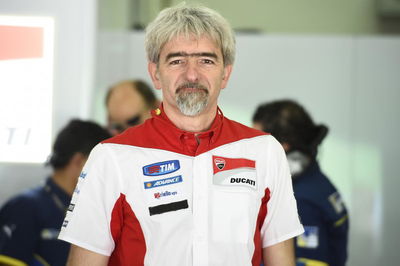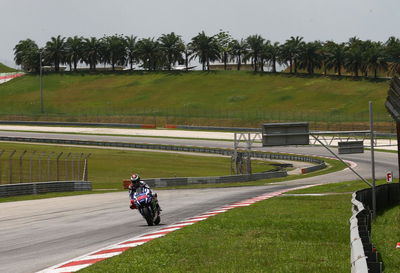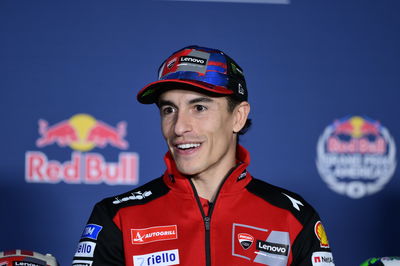Ducati benefit from Open ECU effort

While the likes of Honda struggle to adapt to MotoGP's new single software, Ducati has made a smooth transition from its factory ECU.
That's hardly surprising given the work Ducati put in with the former Open class software, on which the 2016 'unified' electronics are based, plus the factory's long MotoGP relationship with Magneti Marelli.
"In terms of software, I think we start since the beginning of the Open class [in 2014], because the Open software is the starting point of this 'unified' software," confirmed Ducati Corse general manager Gigi Dall'Igna.
"So we start since the beginning of the Open class to work with the software and I think that we learned quite a lot during the last two seasons. And so we have some small benefit compared to the others from that point of view.
"But frankly speaking, the new software also seems to be working quite well with the Yamaha."
Shortly after joining Ducati, Dall'Igna made the audacious move of trying to switch the official team to the new Open class, originally seen as a place for independent entries.
Using the standard ECU was a prerequisite for the Open class, but - as with the new unified software - development was invited from any manufacturer. Ducati is understood to have handed many of its factory software secrets over to Dorna's Magneti Marelli ECU team to limit the disadvantage of using the shared system.
Ducati's own electronics consisted of a 'Magneti Marelli ECU programmed with Ducati factory software'.
Ducati's rivals were unhappy at the Open move and a compromise kept the official team as a Factory entry (running its own bespoke software) but with many of the Open class technical concessions.
However Ducati also kept one eye on the future by handing Hector Barbera an Open spec Desmosedici towards the end of 2014, then running both Avintia riders under the Open rules last season.
Although Honda and Yamaha also had bikes in the Open class, often to the riders' frustration they seemed far less interested in improving how the ECU performed with their machines. Since all entries must now use the same software, the Open class is disappearing in 2016.
Meanwhile, Dall'Inga believes Ducati will also benefit from strength in numbers this season, with no less than eight bikes on the grid, ranging from GP14.2s to last year's GP15s and the new GP (16).
"In a season where the rules changed a lot, we have the possibility to have more data above all for the unified software, for example," he said. "We can have some tests with different riders and so we can have some different feedback. I think this could be an advantage.
"For sure, we have to manage because eight riders during a race weekend is quite a lot, but I think that we have the knowledge and the people can handle this."
In terms of the change to Michelin tyres, Dall'Igna confirmed: "For sure the Michelin needs something different from the chassis. This is a really big change in terms of pieces and so on... I'm talking about the geometry of the bike, so weight distribution."
Ducati finished the opening test of 2016, at Sepang, with four riders in the top ten - led by superstar test rider Casey Stoner.
Yamaha riders Lorenzo and Valentino Rossi led the way in terms of best lap time, electronics being of greatest gain as tyre grip reduces during a race.












